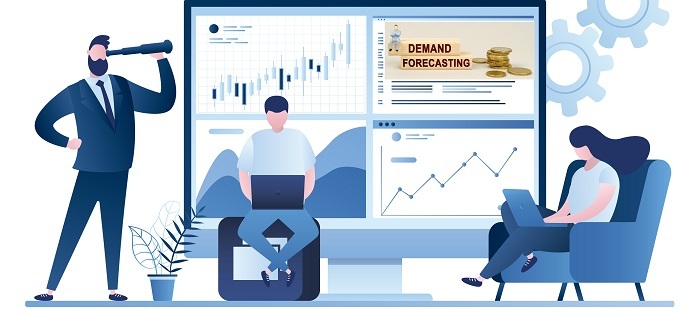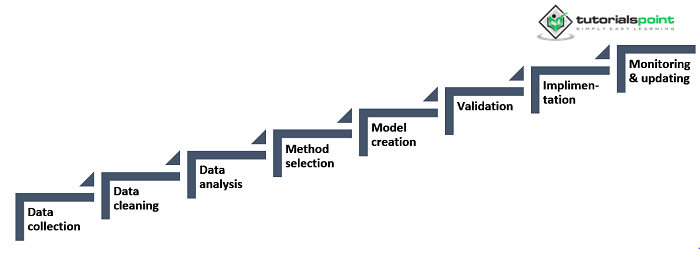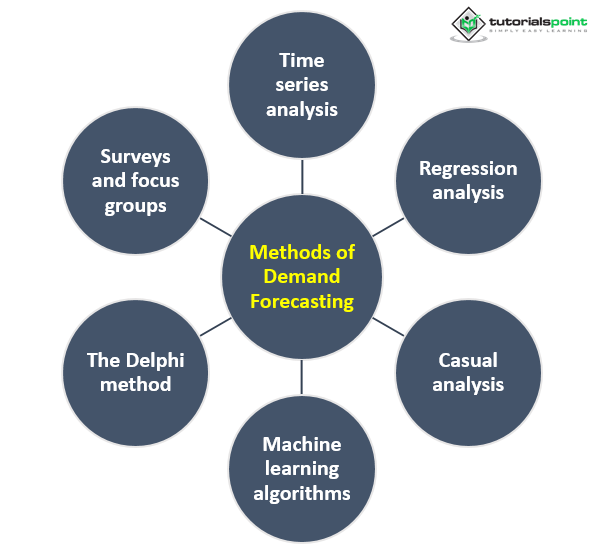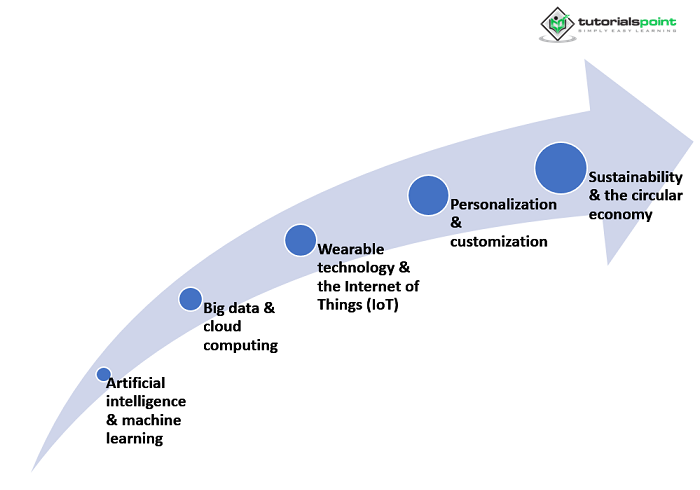

Forecasting for any industry is one of the most essential elements, as it helps to design present industrial model, strategy, and future plan as per the demand of society in the present as well as in the future. Forecasting normally involves predicting future demand for respective products to inform production, inventory management, and pricing decisions. It helps companies make informed decisions by considering various factors such as historical sales data, market trends, seasonality, consumer behaviour, and economic indicators.

The accuracy of the forecast depends on the quality of the data, the method used, and the ability to identify and incorporate relevant external factors. It also helps companies maintain a competitive edge by enabling them to respond quickly to changes in consumer demand and market trends.
Demand forecasting in the fashion industry involves predicting future demand for fashion products such as clothing, accessories, and footwear. This is typically done by analysing historical sales data, consumer behaviour, market trends, and other factors that influence demand. The goal of demand forecasting is to help fashion companies make informed decisions about production, inventory management, and pricing. Accurate demand forecasting enables companies to avoid overstocking or stock shortages, reduce waste and unsold inventory, and improve customer satisfaction. It also helps companies plan for future growth and investments by anticipating changes in demand for different products and categories. Demand forecasting in the fashion industry is a critical part of supply chain management and is essential for the success and sustainability of fashion businesses.
The demand forecasting process in the fashion industry typically involves the following steps

Data collection − Collecting and organising data from various sources, such as sales records, market research reports, and industry trends, to inform the forecasting process.
Data cleaning − Removing errors and inconsistencies from the data to ensure accuracy.
Data analysis − Analysing the collected data to identify trends, patterns, and relationships that can be used to make forecasts
Method selection − Selecting the appropriate forecasting method based on the data analysis and the goals of the forecast. Common methods include time series analysis, regression analysis, and machine learning algorithms.
Model creation − Creating a forecasting model using the selected method and the collected data
Validation − Validating the model by comparing its predictions with actual demand data and adjusting it as necessary.
Implementation − Implementing the demand forecast by using it to inform production, inventory management, and pricing decisions
Monitoring and updating − Monitoring the performance of the demand forecast and updating it regularly to reflect changes in consumer behaviour and market trends
The demand forecasting process is an ongoing and iterative process that requires continuous monitoring and updating to ensure its accuracy and effectiveness.
There are several methods used for demand forecasting in the fashion industry; some of the most common are
Time series analysis − This method uses historical sales data to make predictions about future demand. It assumes that future demand patterns will be similar to those observed in the past.
Regression analysis − This method uses regression techniques to identify the relationship between demand and one or more independent variables, such as advertising expenditure, consumer income, or seasonal effects.
Causal models − This method involves identifying the key factors that drive demand and using them to make predictions. It requires a deep understanding of the underlying causes of demand.
Machine learning algorithms − This method uses algorithms such as artificial neural networks and decision trees to identify patterns and relationships in large and complex data sets.
The Delphi method − This method involves gathering opinions and forecasts from experts in the field to make predictions about future demand.
Surveys and focus groups − This method involves collecting data directly from consumers through surveys or focus groups to make predictions about future demand.

The choice of method depends on the available data, the complexity of the demand patterns, and the goals of the forecast. A combination of methods may also be used to achieve the most accurate and reliable predictions.
Improving demand forecasting in the apparel industry requires careful consideration of various factors that influence consumer behaviour and market trends. Here are some tips to improve demand forecasting in the apparel industry
Accurate data collection − Collecting accurate and comprehensive data from multiple sources, such as sales records, consumer surveys, and market research reports, is essential for accurate demand forecasting.
Regular data cleaning and analysis − The regular cleaning of data to remove errors and inconsistencies and analysis to identify trends and patterns—can help improve the accuracy of the forecast.
Use of advanced methods − Incorporating advanced methods such as machine learning algorithms and causal models can help improve the accuracy of the forecast by considering a wider range of factors that influence demand.
Collaboration with suppliers and retailers − Collaborating with suppliers and retailers can provide valuable insights into consumer behaviour and market trends that can be used to improve the demand forecast.
Regular monitoring and updating − Regular monitoring of the performance of the demand forecast and updating it to reflect changes in consumer behaviour and market trends is essential to maintaining its accuracy and effectiveness.
Incorporating external factors − Incorporating external factors such as economic indicators, natural disasters, and geopolitical events can help improve the accuracy of the forecast by considering the impact of these factors on demand.
Encouraging innovation − Encouraging innovation and experimentation with new methods and technologies can help improve the accuracy of the demand forecast and keep up with changes in the market.
By following these tips, apparel companies can improve their demand forecasting and make more informed decisions about production, inventory management, and pricing.
Forecasting the supply chain in the apparel industry involves predicting future demand for products as well as the resources and materials required to meet that demand. The following steps can help improve supply chain forecasting in the apparel industry

Accurate demand forecasting − Accurately forecasting demand is critical for effective supply chain forecasting. It is important to gather data from multiple sources and use advanced methods such as machine learning algorithms and causal models to make accurate predictions.
Collaboration with suppliers − Collaborating with suppliers to understand their capacity, lead times, and ability to meet demand can help improve supply chain forecasting by ensuring that resources and materials are available when needed.
Data-driven decision making − Using data to inform decision-making can help improve supply chain forecasting by considering the impact of various factors on the supply chain, such as changes in demand, economic indicators, and geopolitical events.
Use of technology − Incorporating technology such as supply chain management software and real-time data analytics can help improve supply chain forecasting by providing real-time visibility into demand and supply, enabling companies to respond quickly to changes in the market.
Flexibility and agility − Being flexible and agile in response to changes in demand and supply can help improve supply chain forecasting by enabling companies to respond quickly to changes in the market and minimize the risk of stock shortages or overstocking.
Continuous monitoring and updating − Regularly monitoring and updating the supply chain forecast to reflect changes in demand, supplier capabilities, and market trends is essential to maintaining its accuracy and effectiveness.
By following these steps, apparel companies can improve their supply chain forecasting and make more informed decisions about production, inventory management, and pricing.
The future of demand forecasting in the fashion industry is likely to be shaped by several trends and technologies, including

Artificial intelligence and machine learning − AI and machine learning algorithms will play a more significant role in demand forecasting by analysing vast amounts of data to make more accurate predictions about consumer behaviour and market trends.
Big data and cloud computing − The use of big data and cloud computing technologies will enable fashion companies to gather and analyse data from a wider range of sources in real-time, providing a more comprehensive view of demand and market trends.
Wearable technology and the Internet of Things (IoT) − Wearable technology and IoT devices will provide real-time data on consumer behaviour and preferences, enabling companies to make more informed decisions about production, inventory management, and pricing.
Personalization and customization − The trend towards personalization and customization will require fashion companies to be more agile in their supply chains, adapting quickly to changes in demand for specific products and sizes.
Sustainability and the circular economy − The growing focus on sustainability and the circular economy will require fashion companies to consider the long-term impact of their products and supply chains on the environment and society
In conclusion, demand forecasting is a critical part of supply chain management in the fashion industry. It involves predicting future demand for fashion products by analysing historical sales data, consumer behaviour, and market trends. The future of demand forecasting is likely to be shaped by several trends and technologies. By using these advancements, fashion companies can make more informed decisions about production, inventory management, and pricing, helping them to stay ahead of the market and achieve success and sustainability. However, the complexity of the fashion industry, with its short product cycles and rapidly changing trends, means that demand forecasting will remain a challenging task, requiring a combination of advanced methods, data analysis, and human expertise